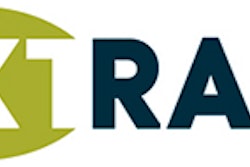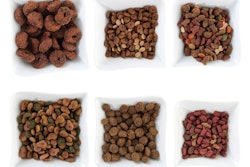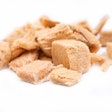
1. Check machine alignment and gearbox timing
It is critical for a twin screw extruder to have the rotating parts perfectly aligned — motor/gearbox/screw-shaft assembly/barrel assembly — in order to avoid problems generated by misalignment, causing extra wear or worse problems such as undue stress on shafts. The manufacturer properly aligns new extruders prior to start-up, but this may drift over years of production.
Likewise, proper gearbox timing (i.e., the relative orientation of the two gearbox output shafts) is key to avoid excessive friction in the extruder. Typically, the two gearbox output shafts have identical orientation; however, power failures, blockages in the screw/barrel assembly, improper control of main motor torque, etc. can cause excessive torque on the gearbox output shafts causing one output shaft to move relative to the other. This results in poor output shaft timing which is translated to the screw assembly and can result in friction between the screw pairs and between the screws and barrel assembly.
We recommend a full machine check-up (wear monitoring, gearbox timing, etc.) once a year. If the equipment runs in production nearly 24/7, then wear monitoring every six months is wise. However, when installing a new machine, we recommend quarterly wear monitoring while the equipment operators are still in the learning curve.
2. Conduct regular wear monitoring/measurement
An extruder wears. That's life. This wear does not happen overnight; a well-maintained extruder typically wears slowly and consistently over time. So, once your machine is mechanically in good shape, it is key to document how the wear pattern of the screws and barrels develops over time by making regular measurements of the screw element diameters and barrel bore diameters. First, this will help the processor order replacement parts in advance and anticipate the maintenance needed. Second, it is a way to monitor whether the wear is suddenly different from a usual situation, highlighting something potentially going astray.
These wear measurements also give you good data to decide whether premium metallurgy will be appropriate. Premium metallurgy is more expensive to buy but leads to reduced operating expenditures; this analysis will determine where along the screw-barrel profile it is needed (it is not always necessary to utilize premium metallurgy everywhere, only in high-stress zones.) Certain premium metallurgies can also be very helpful to resist corrosion when this is an issue.
As screws and barrels wear, they become less efficient at conveying product through the extruder so the filled zone within the barrel increases. That means that more of the total length of the screws and barrel are exposed to higher stress operation; the parts that would normally wear slowly begin to wear much faster to compensate for parts that are too worn out to perform their function. Understanding this and replacing the worn parts in a timely manner can help to minimize wear on other parts.
3. Make sure you have the right startup and shutdown procedures
The best extruder with the best metallurgy must still be operated properly; two critical moments are startup and shutdown. It needs to be done rapidly but softly to prevent, for instance, running the machine at full speed without any product in it. For each recipe, a specific startup and shutdown can be set. Avoid lengthy operation of the screws with the extruder empty or with just water in the barrel. It is necessary to run the screws very briefly with the barrel empty or with only water during startup and shutdown of the extruder; to minimize wear this operation must be kept brief and should be done with the screw speed as low as possible.
In normal operation the barrel filled with product effectively acts as a bearing for the screws keeping them centered in the barrel bores, but in an empty extruder (or one with just water) the screw will rest on the bottom of the barrel bores so turning them will cause friction. The higher the operating speed, the more wear occurs.
4. Train, train and re-train
People change, get promoted or decide the grass is greener elsewhere, so it is important to have a training program for new hires. However, after training people typically remember a fraction of what has been taught. Therefore, there is a constant need to train and re-train equipment operators and the maintenance team. Through training and proximity, you can establish the best proactive processes and procedures to keep your extrusion platform in best operating shape.
As for the training, we recommend a staggered approach:
- A: A training session at the manufacturer while the extruder installation is nearing completion at the production facility. This is important for a new customer who is not accustomed to the technology. It is also an opportunity for an off-site test with the product recipes; that will allow the client to "play" with a machine without the pressure of production.
- B: Training during installation (for the maintenance people) and startup (for maintenance, production, etc.)
- C: During machine audits by your supplier, it is a good opportunity to update your training on site. Ask your supplier if they can provide specific full training programs on demand, in their pilot plant or at your plant to address specific questions. It is especially beneficial if you have multiple production sites, as it will ensure consistent procedures in each plant. Even if you do not organize additional training during the machine audit, it is a great idea to have one or two mechanics work with your supplier’s technician. This is in effect a non-formalized refresher/training for your mechanics.
Processors who focus on maintenance on a continuous basis are the ones who have the most reliable equipment. Maintenance does not simply mean fixing what is broken; taking a more proactive approach including alignment and timing checks, wear monitoring, proper operation and training can help significantly reduce operating and maintenance expenses while minimizing unplanned downtime.
Michael Rhinehart is the technical and quality director of Clextral Inc. and has 22 years in Clextral service. He developed and directs Clextral’s Top Gun Training for mechanics and extruder operators.
Read the companion article, "Fresh meat in pet food #1 trend affecting extrusion,” published in the December 2019 issue of Petfood Industry magazine.
















